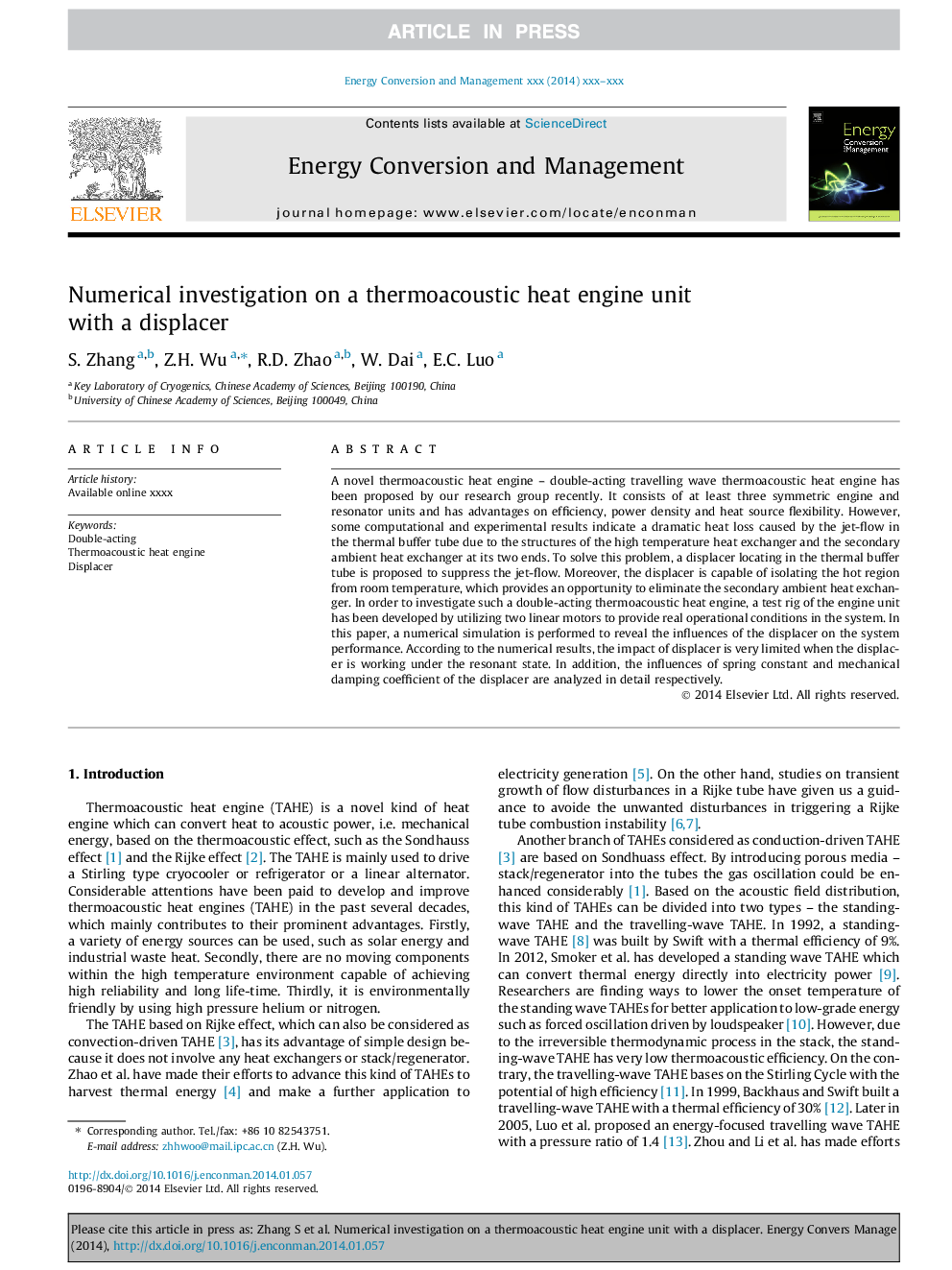| Article ID | Journal | Published Year | Pages | File Type |
|---|---|---|---|---|
| 7164652 | Energy Conversion and Management | 2014 | 7 Pages |
Abstract
A novel thermoacoustic heat engine - double-acting travelling wave thermoacoustic heat engine has been proposed by our research group recently. It consists of at least three symmetric engine and resonator units and has advantages on efficiency, power density and heat source flexibility. However, some computational and experimental results indicate a dramatic heat loss caused by the jet-flow in the thermal buffer tube due to the structures of the high temperature heat exchanger and the secondary ambient heat exchanger at its two ends. To solve this problem, a displacer locating in the thermal buffer tube is proposed to suppress the jet-flow. Moreover, the displacer is capable of isolating the hot region from room temperature, which provides an opportunity to eliminate the secondary ambient heat exchanger. In order to investigate such a double-acting thermoacoustic heat engine, a test rig of the engine unit has been developed by utilizing two linear motors to provide real operational conditions in the system. In this paper, a numerical simulation is performed to reveal the influences of the displacer on the system performance. According to the numerical results, the impact of displacer is very limited when the displacer is working under the resonant state. In addition, the influences of spring constant and mechanical damping coefficient of the displacer are analyzed in detail respectively.
Related Topics
Physical Sciences and Engineering
Energy
Energy (General)
Authors
S. Zhang, Z.H. Wu, R.D. Zhao, W. Dai, E.C. Luo,
